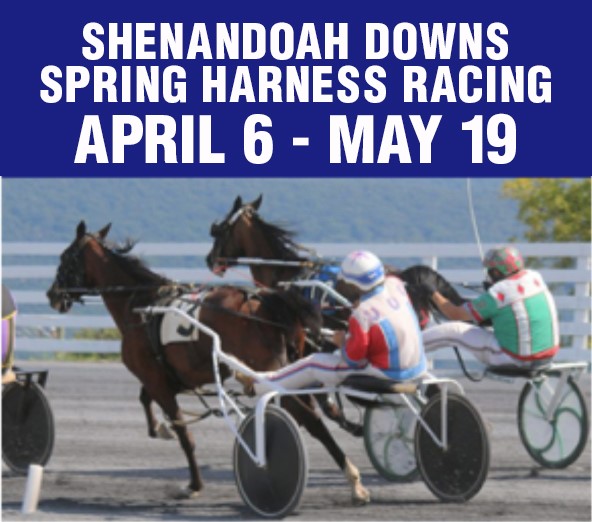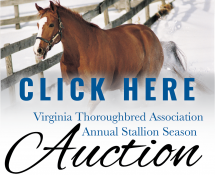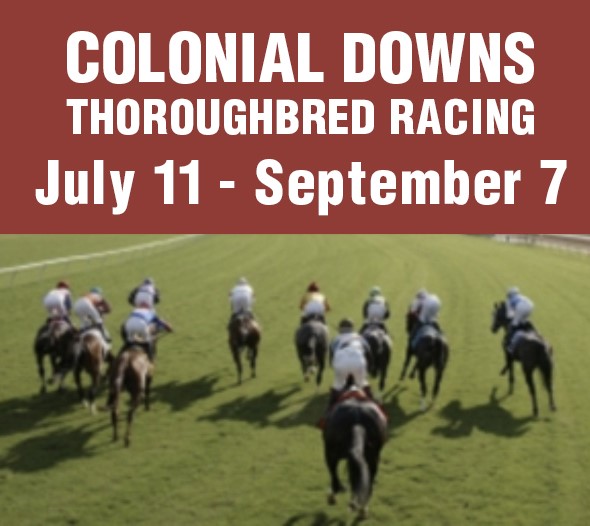When the first thoroughbred race since 2013 is held at Colonial Downs Racetrack this August, one person in particular will breathe a sigh of relief.
Track Superintendent Ken Brown, who began his second stint at the New Kent, Virginia track in April, is in charge of bringing its two highly regarded racing surfaces back to life after years of inactivity. The last thoroughbred race was held there in July, 2013 and the last standardbred race took place over the dirt track in October, 2014. “It took me a while to wrap my head around the scope of what needed to be done, said Brown. “When I first got here, the dirt track especially didn’t seem too out of whack but quickly realized it needed a lot of work. We brought in surveyors, got Joe King’s (original track architect) plans, and reached out to industry experts for advice.”

The New Kent venue features a 1 1/4 mile dirt oval with a chute in the backstretch that allows horses to encounter just a single turn in a one mile race. The only track with a bigger dirt oval is at Belmont, which is 1 1/2 miles around.
Brown was able to save about one-third of the track’s prior cushion and will bring in the other two-thirds needed from new material, which has all been extensively tested and analyzed to meet the highest standards of surface safety. Two inches of the dirt track cushion is down now and four more inches is set to be placed in the next two weeks. “It’s a tedious process,” he said. “It takes six hours for the paver to make a lap of the oval and it can only cover an area 13 feet wide at a time.”
“It’s a shame the dirt track doesn’t get used more,” said John Dale Thomas, Colonial’s long time thoroughbred and harness track superintendent who still serves as a course consultant at New Kent. “It’s got those wide sweeping turns which are so great for the horse. We’re just fortunate here to have two top notch ovals here.”
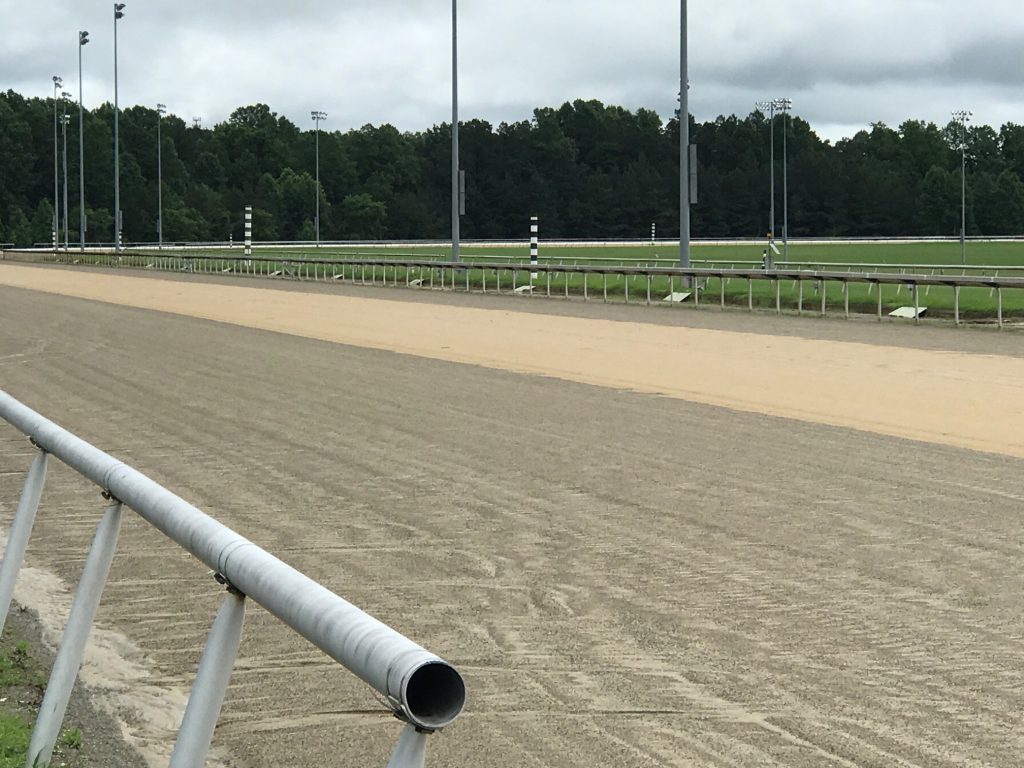
Colonial is probably best known for its Secretariat Turf Course though. The 180 foot wide surface features bermuda grass and at its outmost rail position, is 1 1/8 miles around. At its inner most rail spot, the course is 7/8ths around. In all, there are nine different rail positions. Colonial expects to card 80 percent of races on the grass this summer when racing begins August 8th.
A controlled burn of the turf took place on April 16th which helped remove dead cover from the top in a quick and efficient manner. Since then, it has blossomed into a lush green color though the nice Virginia spring weather gave Brown a challenge. “It takes an enormous amount of water to hydrate a course that size,” he said. “With the hot and sunny conditions we had for a while, it was a struggle to get the amount of water on it the way I would have liked but we managed.”
Several straight days of rain this past weekend helped Brown’s mission in watering the course though it held up work on the dirt track by several days. “We sprayed the turf surface for weeds last week and the dirt track is still on schedule so we’re in nice shape.”
Horses will begin arriving when the barn area opens July 25th. Racing begins August 8th and continues three days a week until September 7th. The highlight of the meet is the Grade 3 Virginia Derby on August 31st. “There’s always pressure to make deadlines but you strive to make it perfect whether you’re a pilot, mechanic or horse track superintendent. In our world, every race day is like its a Kentucky Derby or Preakness day. We treat it the same and strive to make it perfect.”
Asked what it was like to work the Preakness Stakes at Pimlico for 18 years, he admitted that high profile days can be nerve wracking. “You’re on pins and needles all day and the adrenaline is just flowing . By the end of the day, you’re exhausted but don’t even realize it until the next day.”
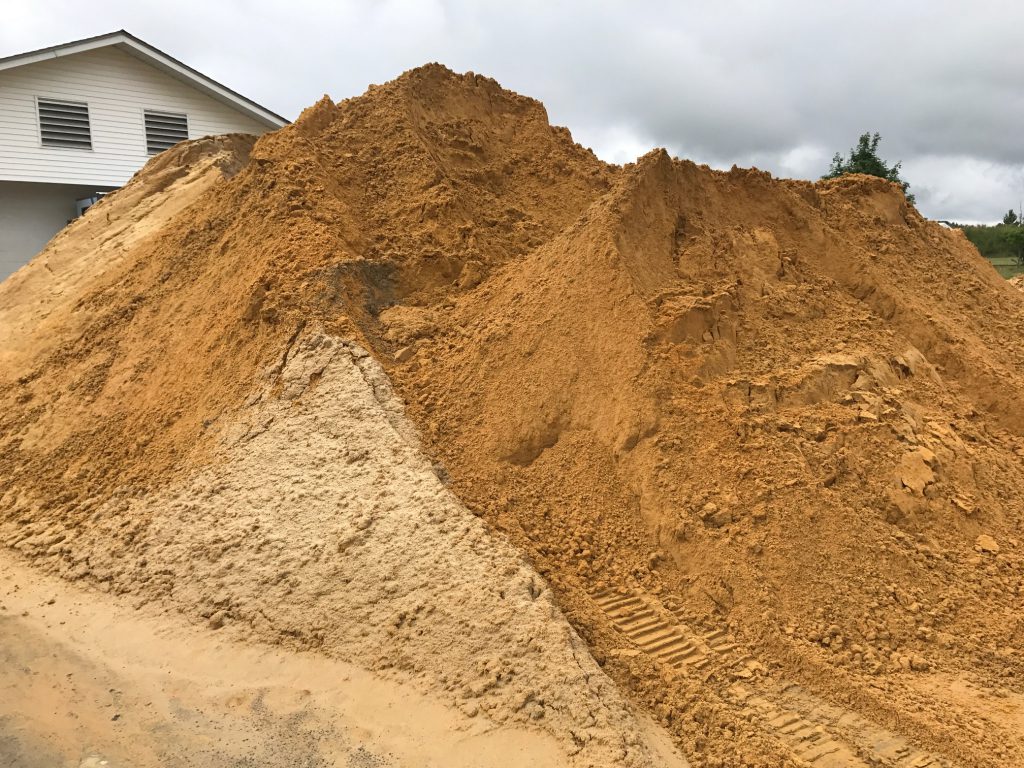
Ferris Allen, Colonial’s all time leading trainer, spoke highly of Brown. “Ken is a straightforward no nonsense taskmaster when it comes to preparing and maintaining racing services. He knows his stuff and he has no interest in the spotlight. He simply likes doing his job well.”
Brown grew up north of Toronto, Ontario and got his start in the business by joining his brother at a summer job at Woodbine in 1973. His brother chose not to stay in racing but Brown never left. His longest stint was at the Maryland Jockey Club (MJC) from 1987-2005. Since the MJC had a management contract with Colonial Downs for most of his last ten years there, Brown was involved in the dirt track and turf course construction in 1996 then worked the meets after the track opened in 1997. He left Maryland in 2005 and went on to spend ten years at Delaware Park and the last two years at Minnesota’s Canterbury Park.
“Ken was recommended to me by Jamie Richardson, track superintendent at Churchill Downs,” said Jill Byrne, Vice President of Racing Operations at Colonial Downs. “The safety of our track surfaces for the horses, jockeys and exercise riders is of upmost priority. Ken’s knowledge, expertise and reputation in the horse racing industry along with his dedication to insuring that safety standard, made it an easy decision to bring him on the team.”
Brown expects race days at Colonial to be sun-up to sun down affairs since horses train in the early morning hours and racing doesn’t begin until 5 PM. “I got a taste of that at Canterbury since they often raced in the evening. I’ll do whatever it takes here to make the track surfaces safe. This job isn’t easy,” he added. “It’s more scientific and there’s way more attention to detail now versus when I first got involved several decades ago. Horse racing has changed as well though over time.”
A typical card at Colonial will feature racing over two different surfaces at varied distances. Getting the starting gate in its proper position from one race to the next will be a key part of his job as well. “Colonial Downs is probably the favorite track I’ve worked at in my career but that turf course is a monster,” he said. “One of my biggest challenges will be to make sure the gate gets in the right spot.”
Thomas, who still spends time at Colonial and actually conducted the controlled turf course burns there in 2018 and this year, has an appreciation for credentials Brown brings to the table. “Ken has been a track man for forty years and learned under John Passero. He’s very capable. I think everyone’s going to be happy with the surfaces this year.”



